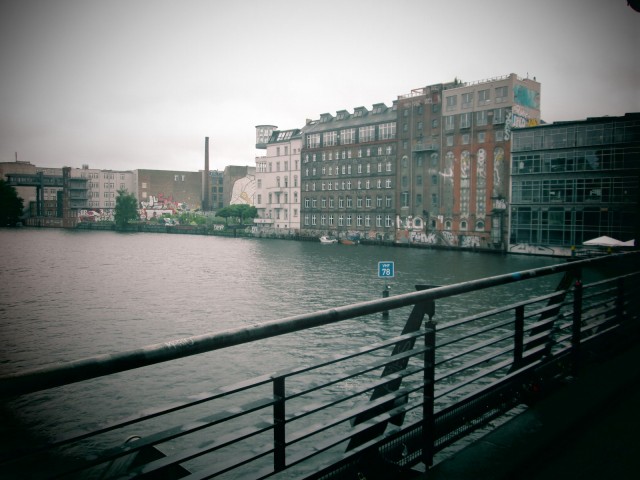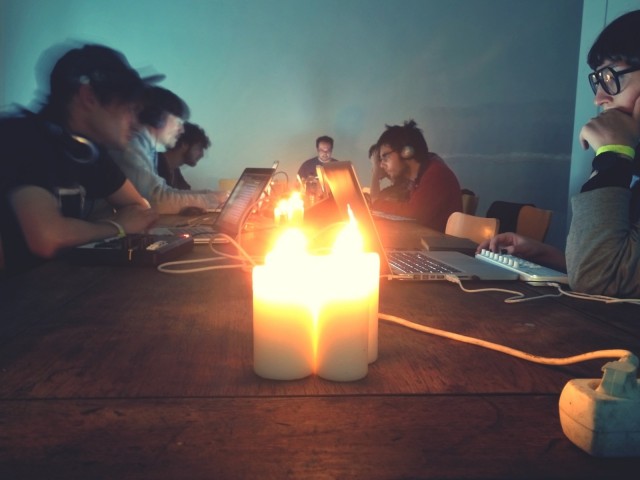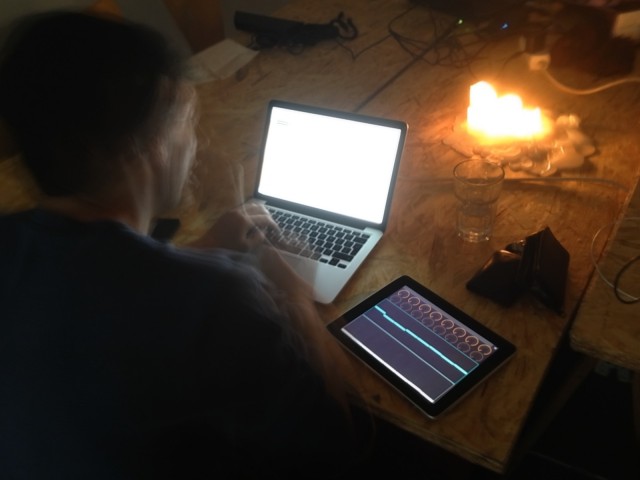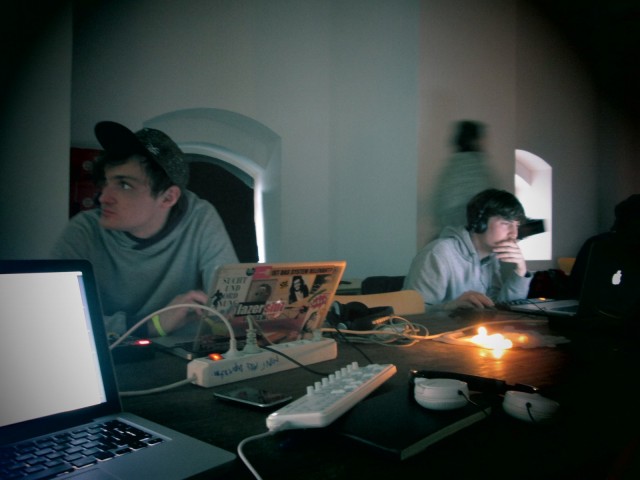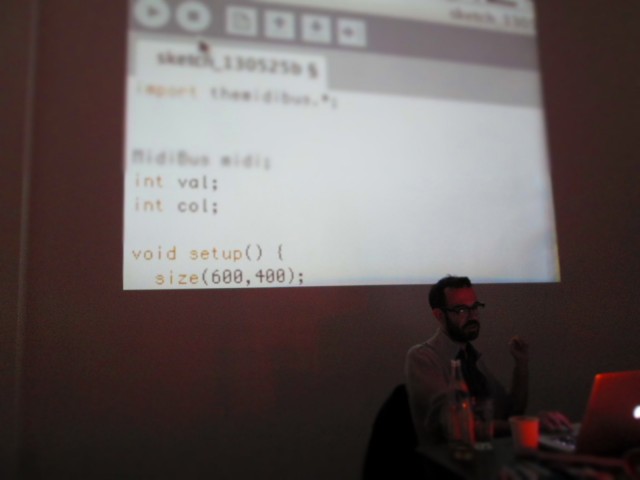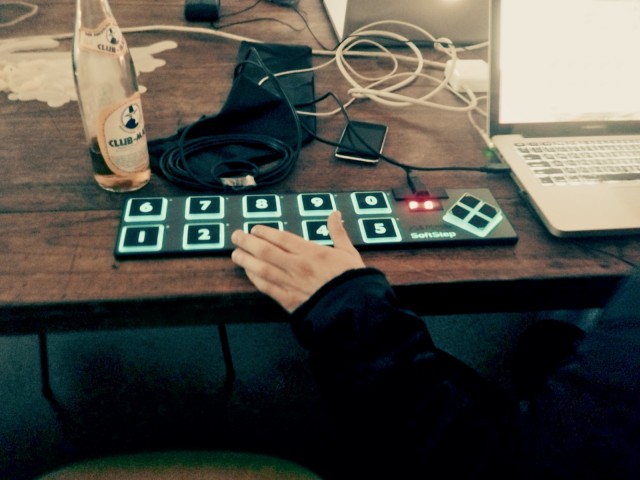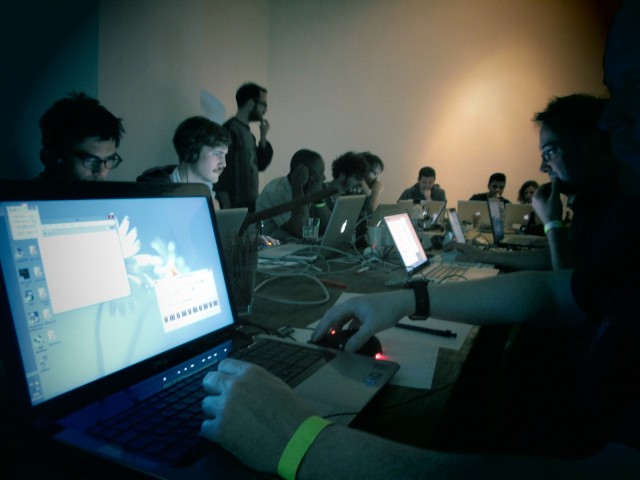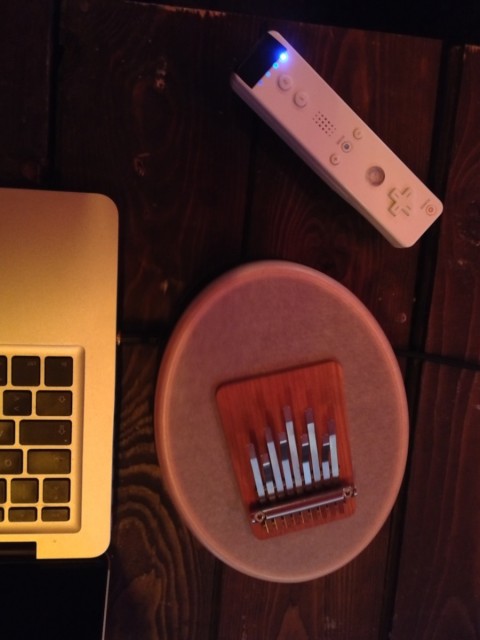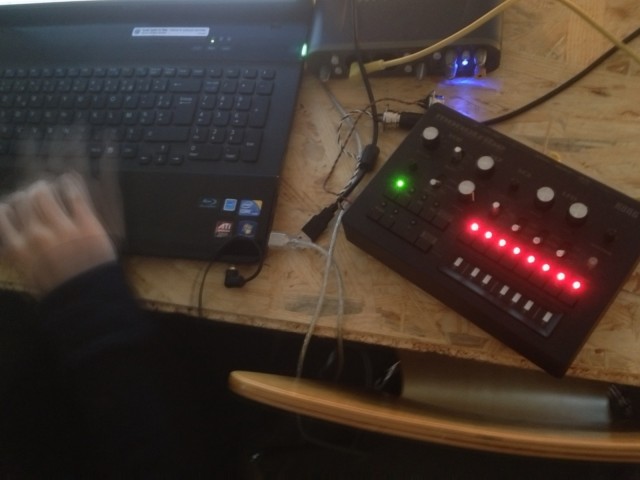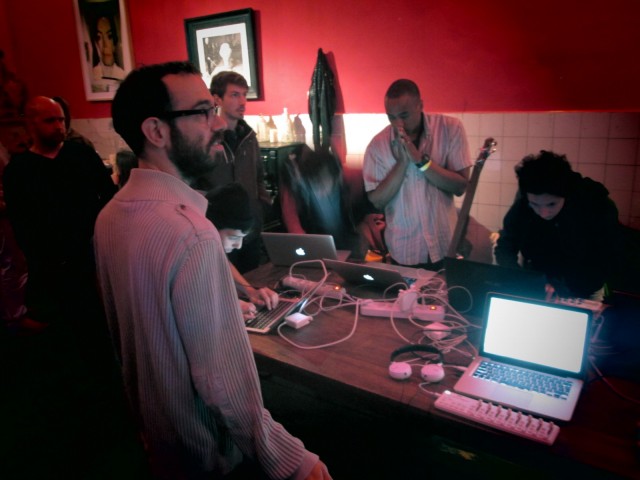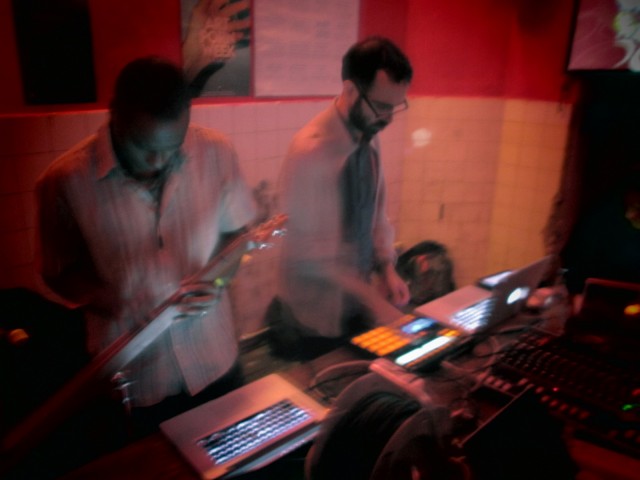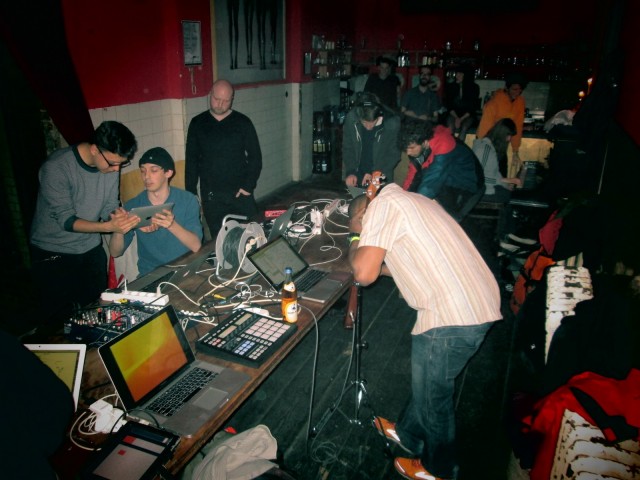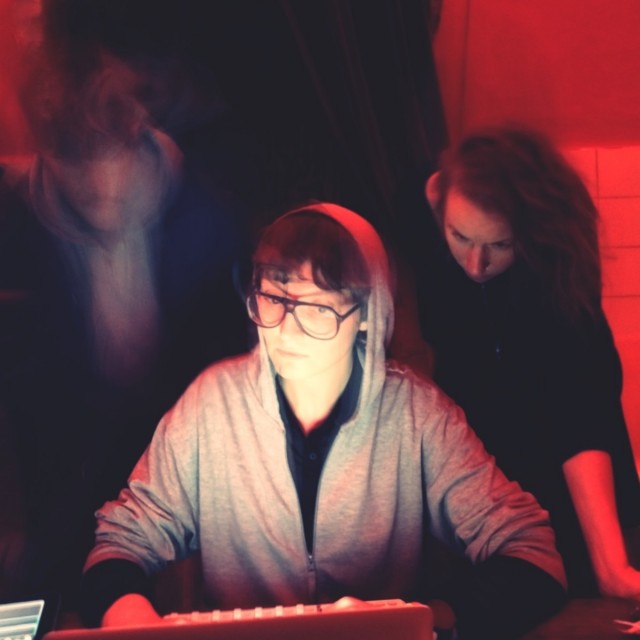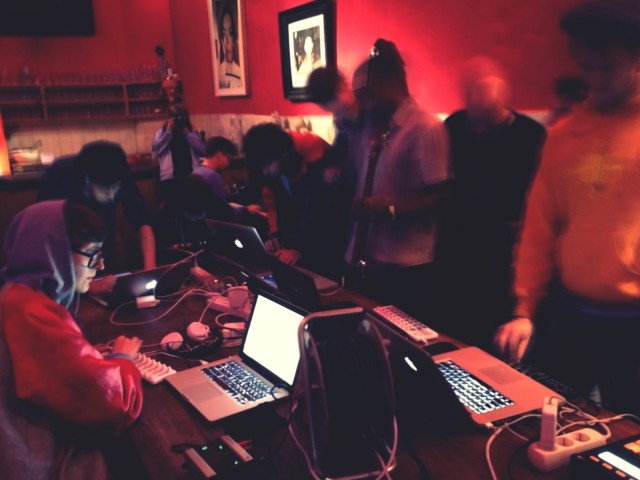There is something phenomenal happening in music technology right now. We usually write about the developments in the tools themselves. But if you want to see new things happening, it’s often more about the spread of knowledge around those tools.
Watching it evolve is astounding. Focus only on the tools, and the landscape hasn’t changed much in recent years. But look at the people using them, and it’s a different story. More and more diverse audiences of artists are picking up the skills to use these inventions, and they bring a wider range of aesthetics and ideas to how they’re used.
I’m fortunate to get to play even a small part in that. And that means sometimes going from being a disembodied voice on the Web to getting in a room with people to teach, experiment, and trade ideas. There’s great education happening around commercial tools, but I especially like starting people with Pure Data and Processing because they are free, and there’s a level playing field. People can show up with any laptop (or even a netbook), any OS, and get to work. (And they can still apply the same skills to other tools – working in Pd and Max for Live, for instance – if they so choose.)
We tried a new format last year co-organized with Elisabeth Neid, at an event in collaboration with Berlin’s Mindpirates. (They’re the same folks who made this free Red Bull Music Academy film making the rounds now.) The goal: go from learning to experimental hacking to playing. And I was stunned by the results, as vocalists and VJs, instrumentalists and coders all came from radically different skill levels to jam together by the third day.
Next stop, Netherlands Thursday: If you’re near Amsterdam this week, registration is still open for a more compressed workshop hosted by Fiber Festival and 5 Days Off, as part of the programming for an event I’m inspired by entitled “Coding the Club”:
THE ENCODED GROOVE: FREE SOUNDMAKERS WITH PURE DATA
I hope you can make it, if you’re in the Netherlands – advance registration is required (the earlier, the better, so we can plan).
But I also want to share the outcome of our past workshop. Czech-born sound artist and journalist Zuzana Friday Prikrylova was there as a participant, and I asked her to write a frank appraisal of what it was like learning as a beginner. I’m actually blushing a bit as it focuses on me, but my aim is actually a bit different – I’m curious to hear what the teaching and learning experience with something like Pd has been for other readers.
Friday gives us some thoughts and a nice photo essay that paints a portrait of how things went. Here she is. -Peter Kirn
Create Digital Music & Mindpirates: Laptops on Acid workshop
23rd – 25th May 2013, Berlin
When I got a chance to attend the workshop Laptops on Acid organized by Peter Kirn together with the arts collective Mindpirates, I got very excited. The program promised to teach us about making our own free DIY tools for beats and visuals in two programs: Pure Data (Pd) and Processing.
The process of exploring and applying what we learned was divided into three components: LEARN, which took place on Thursday and partly on Friday and provided insight into both programs; HACK (Friday and Saturday), when we used the acquired knowledge by trying our own projects (including connecting our laptops to devices we brought like MIDI keyboards or instruments), and PLAY – an open jam on Saturday, where we were free to play around together.
The whole workshop took place in the industrial spaces of Mindpirates’ Projektraum and Vereinsheim, located near Schlesisches Tor, where this artistic collective organizes exhibitions, festivals, music events, and other projects. Thanks to the fact that the building used to be a bakery, its rooms abound with factory-like yet comfortable genius loci and provided great space for our work. And when it got too dark for our strained eyes, ubiquitous candles helped us. Mindpirates also provided vegan dinners and snacks every evening, so the participants could fully concentrate on working.
Apart from me, Peter, and the organizer hosting on behalf of Mindpirates, Elisabeth Neid, there were 22 participants. Each one of us had different backgrounds and experience. Some had previous experience with building DIY synths Arduino and Pd – there was a university lecturer, a jam organiser, and a programmer from SoundCloud. Some had no previous experience in music (one VJ travelled all the way from Helsinki), or even no previous experience with music, visual art, or programming at all! And still each one of us has found his/ her place there.
At the beginning, there was tabula rasa. And by that I don’t only mean the blank-white project window of Pd, which was waiting for me to be filled with patches. I also mean myself and my previous experience with Pd, Processing, or any patching program at all – there was none. The important sentence for me in description of the event actually was “No previous coding background required.” Therefore, I used myself as a guinea pig to test the truth of this claim. And the result is quite pleasing!
With limited time and so much to teach, Peter Kirn didn’t lose time by giving us a long theoretical lecture about patching or Pure Data on Thursday, but tossed us directly into open water and gave us a hand with learning how to swim. So after a brief but enticing introduction, during which he named all the different (musical and visual) instruments we can actually build in Pd – from a vocoder to a video mixer – we were confronted with creating itself and started our hands-on lesson.
At first, we learned the most-used objects in Pd, their functions and shortcuts, as well as basic functions and settings of Pd itself (connecting patches, switching modes, etc.). Peter also compared Pd and Processing in terms of how they work. The first thing we created was a simple oscillator, which sounded like an airplane or music experiments from the 50s, and, as most of the other stuff we built, worked on the basis of principles of MIDI data flow. We continued building a synthesizer with envelopes, and later on, Peter continued explaining different types of signal, including data rate (MIDI) and audio rate (for audio signal) and how to normalize ranges for each (0-127 for MIDI, 0-1 for audio signal and certain data types). Later, we learned basic information about Processing, from drawing basic geometry to moving it around the screen and adding color. Eventually, Peter connected Pd with Processing, so the picture and sound could interact.
On Friday, everybody was free to bring external devices for the HACK part of the workshop. Because most of the participants brought devices based on MIDI (plus some more unusual additions like an electric contrabass), he focused on explaining how to connect MIDI devices to Pd and create those patch structures, which would enable to manipulate and play the instruments and devices via Pd.
Later on, we divided into two groups: one focused on playing around with MIDI control as the other, including me, deepened our knowledge in patch construction, creating sequencers and other instruments. We also learned how to “cheat” by borrowing bits and pieces from the free and open source rjlib library, using this to quickly create effects for a guitar or a microphone. At the end of the evening, Peter showed us more possibilities of manipulating images in Processing, so a picture or a video texture could be fragmented live.
On a rainy Saturday, we met at 3 pm to continue playing around and discovering possibilities in our patches and instruments, eventually leading to an open jam in the Vereinsheim space. Most of the participants played improvised music and used the skills they learned during the three days, experimented with instruments, reacted to each other and created ambient and experimental potpourri of soundscapes.
Musical performance were accompanied by visual performances made by Peter Kirn in Processing, transforming from impressive urban sceneries to abstract minimalistic patterns and lines. I stayed aside though, and just played a bit of the piano for a while – not only because my unorganized mind forgot to borrow a cable to connect a microphone with my laptop, but mostly because improvised singing in the constantly changing flow of music would require too much creative concentration, which I regrettably lacked after the 3-day marathon. So I just let my mind get carried away in my colleagues’ music performances, collecting the whole experience from Thursday to Friday in my head.
During the workshop I wrote a bunch of notes, some of them relating to the creation process, some of them describing the workshop in general because of the report; therefore, it was not that difficult for me to overlook something important and then ask about it again. But Peter was patient enough to answer our questions and repeat the useful answers out loud for the others.
Otherwise, his lecture style was very enthusiastic, it flowed smoothly and fast like a river stream, so from time to time it was a bit difficult for us to catch up. On the other hand, not only that he could explain practically everything in a very understandable way using various metaphors, but also inserts a number of killing jokes and funny comments. So listening to him was therefore both interesting and amusing at the same time.
I’m looking forward to explore the possibilities of Pd at home at my own pace, and although I think that the previous knowledge or programming is helpful and sometimes I got lost in all those ones and zeros (or ones and one hundred-twenty-sevens to be precise), this three-day long trip to Patchingland taught me, and each one of us, a lot.
Thanks to it, I got the basic insight of the functions of Pure Data and principles of patching in general, which opens the door to countless possibilities in music making (with the help of websites recommended at the end of the workshop). I also learned how to build different patches together to create a synthesizer and effects for analog instruments or microphone. And finally, it was a lot of fun and a cool occasion to meet people from all the different fields of music, art and programming. I can’t think of many better ways of how to spend a weekend in cold and rainy Berlin.
Photos: Zuzana Friday Prikrylova and Peter Kirn.
Weather is warm and sunny for Amsterdam this week, but we’ll still have fun. -PK


